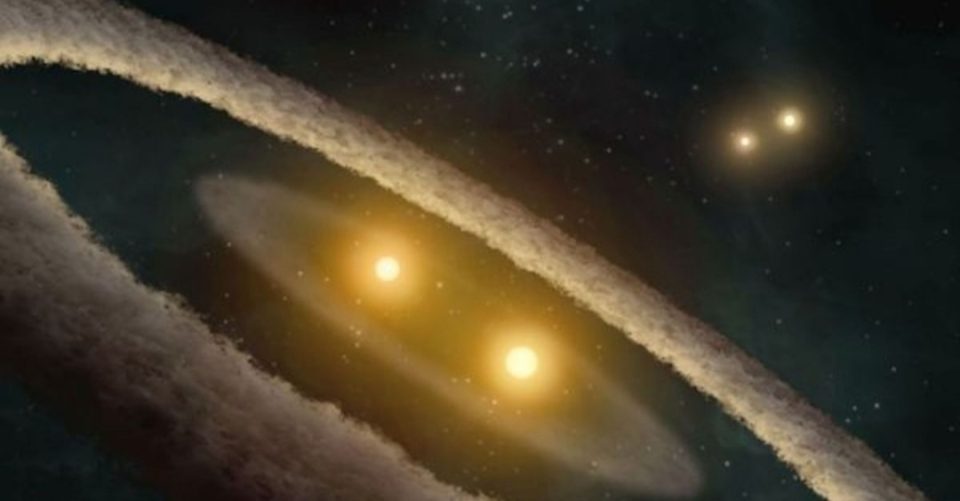
Scientists spot triple star system, call it rarest

In a recent discovery, astronomers have discovered a triple star system that is unlike others of its kind.
The unusual star system is more massive, compact and has a hierarchal order where two stars orbit each other while a third star orbits the pair.
The triple or tertiary star system is named TIC 470710327 and was detected by researchers using data from NASA’s Transiting Exoplanet Survey Satellite (TESS) observatory that is orbiting Earth.
In the star system, the binary stars circle one another at the centre of a system while a third massive star orbits the central pair.
The binary pair of stars have a combined mass of around 12 times that of the Sun and has an orbit period the same as Earth of a single day. The larger star is about 16 times more massive than Sun and orbits the binary pair every 52 days.
Scientists believe that the orbiting speed of the larger star is “pretty fast” when one considers its size.
A press release courtesy of the Niels Bohr Institute (@UCPH_Research), presenting our results on quadruples, dynamics, and mergers in the context of @NASA_TESS‘s TIC 470710327, a unique triple star system. https://t.co/9TRydUeivt
— Alejandro Vigna-Gómez (@alejandro_vigna) July 18, 2022
Researcher Alejandro Vigna-Gomez from Niels Bohr International Academy said: “As far as we know, it is the first of its kind ever detected. We know of many tertiary star systems but they are significantly less massive. The massive stars in this triple are very close together- it is a compact system.”
Also See: [In photos] Through the eyes of James Webb Telescope: The birthing of stars
Vigna Gomez explained that while investigating the formation of the star system, three possibilities were considered.
According to researchers, a possibility could be that the bigger star formed first, it ejected material that would have initiated the formation of a binary star pair that close.
Another possibility is that the binary and the third star formed separately and were eventually brought together by gravitational pull and got locked in each other’s orbit.
A third reason could be where there were two binary star systems and one among the two systems must have merged into one, bigger star.
Another expert from the study Bin Liu said: “We also encourage people in the scientific community to look at the data deeply. Maybe there are more compact systems buried in the data. What we really want to know is whether this kind of system is common in our universe.”
Bin Liu and Vigna Gomez had combined efforts to study the system formation, running more than 100 iterations on the computer to assess the most likely outcome of the scenario.
Scientists say that studying the system in detail and making a statistical analysis of the same are two different things.
Researchers say that they have some observations but need the expertise of an astronomer to interpret them well.


